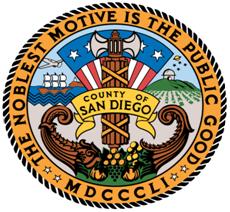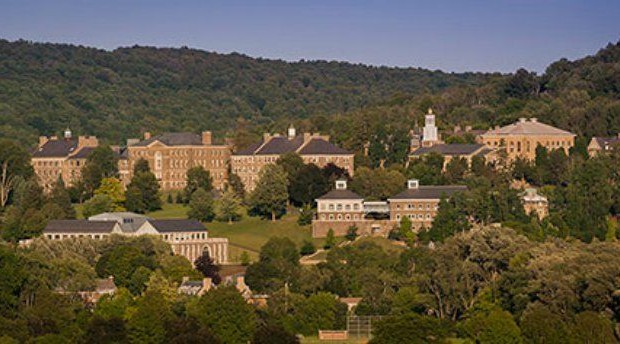Study Paints Picture Of Heightened US Dependence On Foreign Skilled Workers
Post Views 3
It’s a two-way lane that sees job being exported and workers being imported to do the jobs available here. It’s a sordid picture and likely to remain so until the US finds way to grow the skills here.
A report released by the Brookings Institution, a nonpartisan public policy organization on the demand for highly skilled immigrants in United States shed light on the demand and compiled a list of the top 10 public American companies that requested the most H-1B visas.
Over the last 12 years, the companies have applied for these visas that permit these specialized workers to work in the United States for three years, with an option of renewing their visas for a maximum of three years more.
U.S. Department of Labor under the H-1B program issues visas for 85,000 workers — 20,000 of these workers must have graduated with an advanced degree from an American institution.
It is a win-win situation for both the American companies as well as the foreign workers. The companies get the workers that the country seriously lacks, whilst the foreign workers get jobs of their choice, that are not available to them in their respective countries, at least not at the lucrative pay, that the US companies will give. Moreover, it is seen that most workers under the H-1B visas go on to stay in the US and seek permanent residency.
H-1B temporary visas are significant because they open the only route that skilled foreign nationals, including international students educated on U.S. campuses, have to work long-term in the United States.
This year the visas reached their capping much faster than earlier years, catching most employers napping who will now not be able to hire anyone on a new H-1B visa for a long time. Companies that did not apply on time will not be able to do so until April 2013 to file a visa petition and will have to wait till October 2013 to employ an H-1B worker.
Ever since the program began the number of applications has surpassed the number of visas available, meaning that the demand remains only partially filled. Between 2001 and 2003 the cap was raised to 195,000. However, academic and research institutions are exempt from this cap and usually account for 10% of the Labor Condition Applications submitted.
How fast this cap is reached is considered to be a good yardstick for measuring the health of the economy. Considering that the H-1B visas apply only to for-profit organizations, the speed at which it is filled is a meaningful indicator.
Neil Ruiz, one of the three authors of the study, said that this year the H-1B visa cap filled much earlier than last year, reaching the target in 10 weeks as opposed to 10 months in the preceding year.
While 24/7 Wall Street focused on US companies, a look at the 25 companies, both private and foreign, that formed the overall basis of the report, revealed surprising information.
Of all the companies requesting H1B visas 50 percent are foreign companies and four of the top ten companies amongst the foreign companies are Indian. Approximately 70,000 employers filed visa applications in 2010 and 2011.
India heads the list, as the most recipients of H-1B visa, with 58 percent of all acceptances. China is a distant second with 8.8 percent and Canada, the third on the podium with a mere 3.5 percent.
Almost 75 percent of the LCAs are for opening in STEM fields, Science, Technology, Engineering and Mathematics.
The Brookings Institution report identified the top 10 public American companies that applied to hire the most skilled foreigners on H-1B visas.
Microsoft Corp. topped the list with 4,109 requests, which is more than double the next public US company on the list. It also tops the list in which both foreign and private firms were assessed. It made nearly 30 percent more requests than India’s Tata Consultancy Services Ltd., which ranks second on a list that includes both foreign and private firms.
Founded by Sri Lankan-American Kumar Mahadeva, Cognizant Technology Solution made 2,017 H-1B visa requests. It is closely followed by Intel that made a request for 1,510 visas. It is worth noting than in the decade between 2001 and 2011, Intel Corp. made over 10,000 requests for foreign workers through H1B visas. IBM the computing and consulting corporate made 1,468 requests and ranks fourth in the visa applicants. Most of these jobs were for consultants and programmers.
Most of Oracle’s Corp. requests for foreign workers on H-1B visas were for various software engineering roles. The average salary for these positions was $103,196. Bringing up the first half of the top ten, Oracle applied for 1,413 visas. The main share of applications, 1, 017, that Qualcomm Inc. made for H-1B visas were for jobs in San Diego, with 983 applications. Other large employers of H-1B visa workers there include the University of California-San Diego and Larsen & Toubro, the Indian conglomerate.
With such weighty dependence on the skills of foreign workers, it is little wonder that Google Inc. forms one of the companies on the top ten list. The Internet giant is lobbying hard at Capitol Hill to initiate H1B visa reform that will increase the number of visa’s available. The company sought 1,009 visas. The average salary for positions for which the company is requesting H-1B visas is $124,616.
CVS RX Services the second-largest pharmacy chain in the United States comes in eighth for number of visas requested. It applied for 688 visas. Pharmacists are also among the highest-paid H-1B visa workers, making on average almost $114,000. Goldman Sachs becomes the first bank amongst the top ten lists of visa applicants. Goldman ranks first in the list for the most requests in the New York metro area.
Last on the list is JPMorgan Chase & Co. made requests for 645 visas, which is a close second to its competitor, JPMorgan Chase & Co.. The average salary for JPMorgan’s H-1B visa applicants was over $107,000.
The research was analyzed a decade of data on H1B worker applications. The Great Recession and the sluggish recovery have only further increased the demand for skilled workers to help American firms compete globally.
Study Paints Picture Of Heightened US Dependence On Foreign Skilled Workers by Harrison Barnes


 San Diego County Back to Full Employment
San Diego County Back to Full Employment  Top Five Reasons Talented Employees Quit
Top Five Reasons Talented Employees Quit  Job Growth Expected in West Michigan Through 2015
Job Growth Expected in West Michigan Through 2015  Best and Worst States for Teachers to Teach
Best and Worst States for Teachers to Teach  10 Jobs with the Fastest Growing Salary in 2017
10 Jobs with the Fastest Growing Salary in 2017  Top 10 Universities to Produce Hedge Fund Workers
Top 10 Universities to Produce Hedge Fund Workers